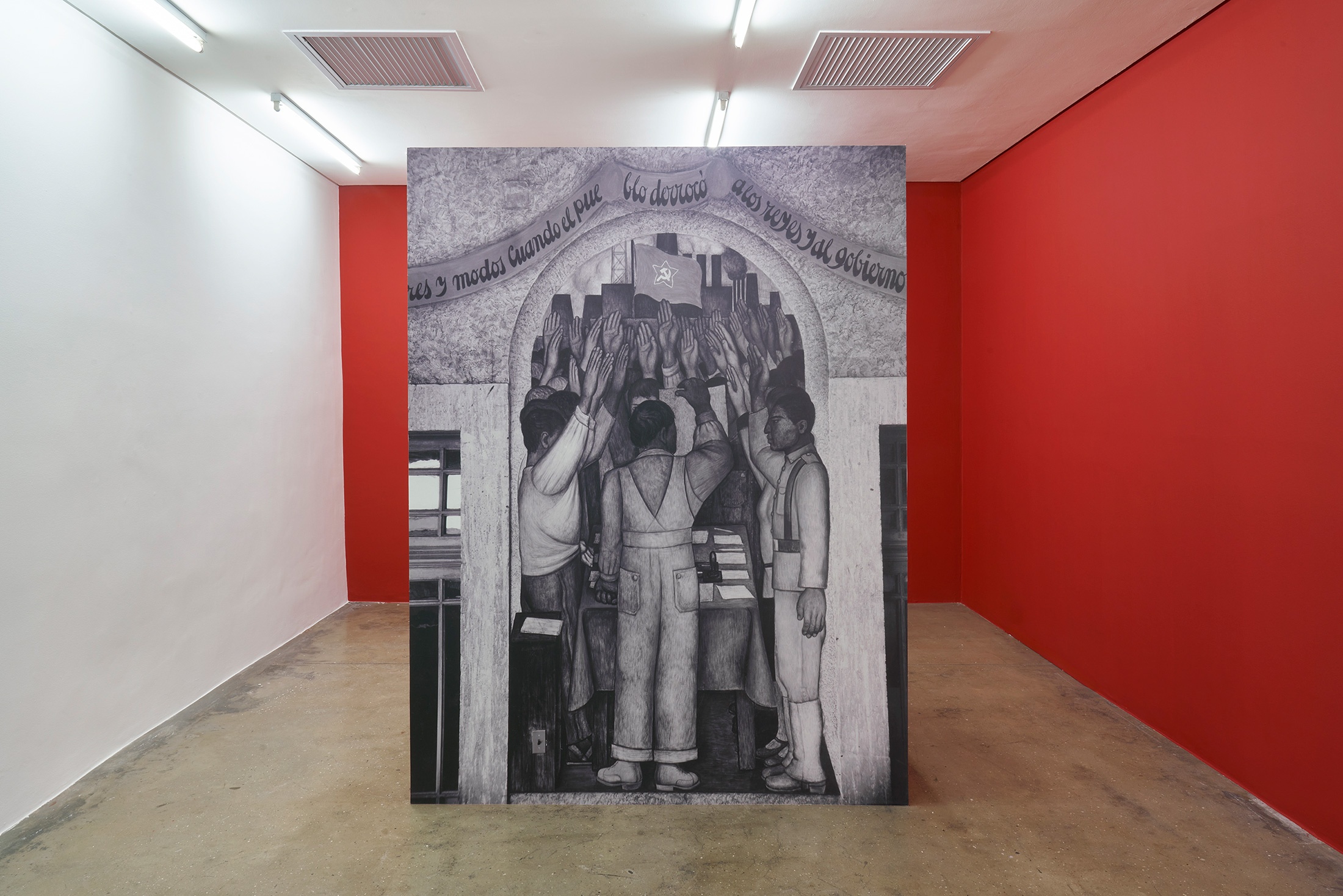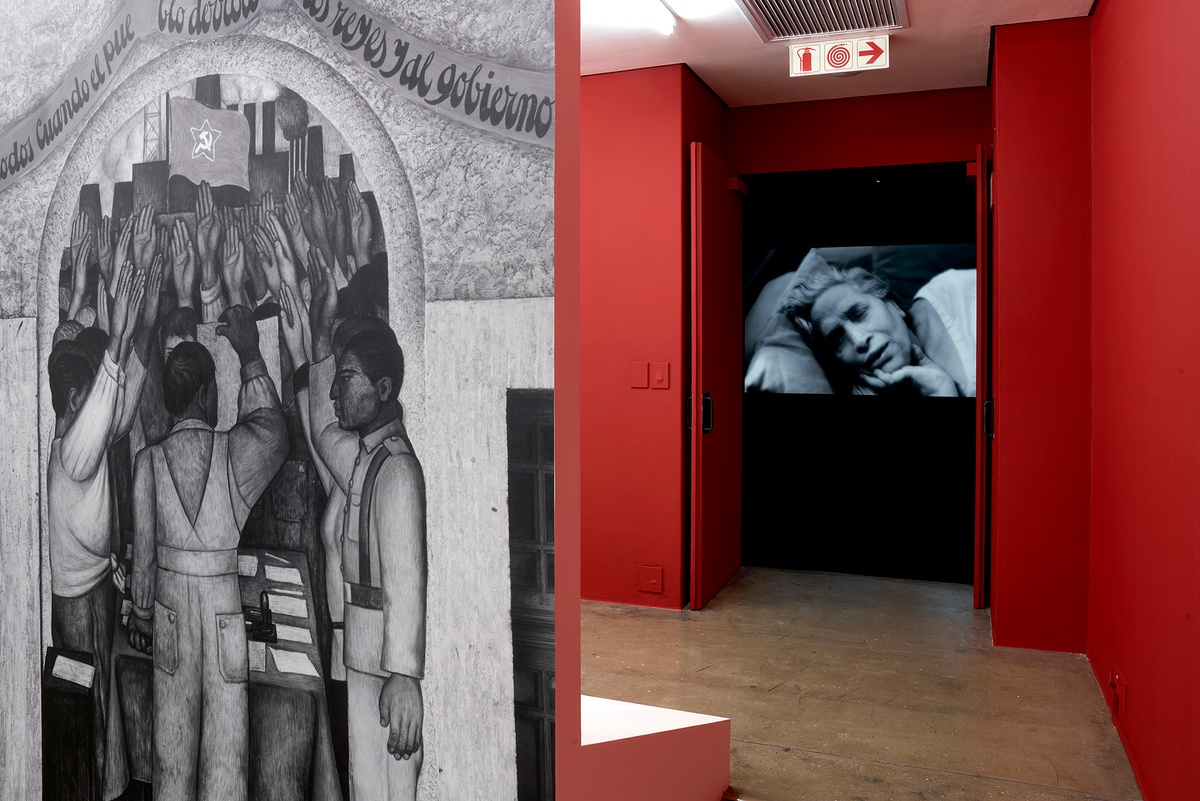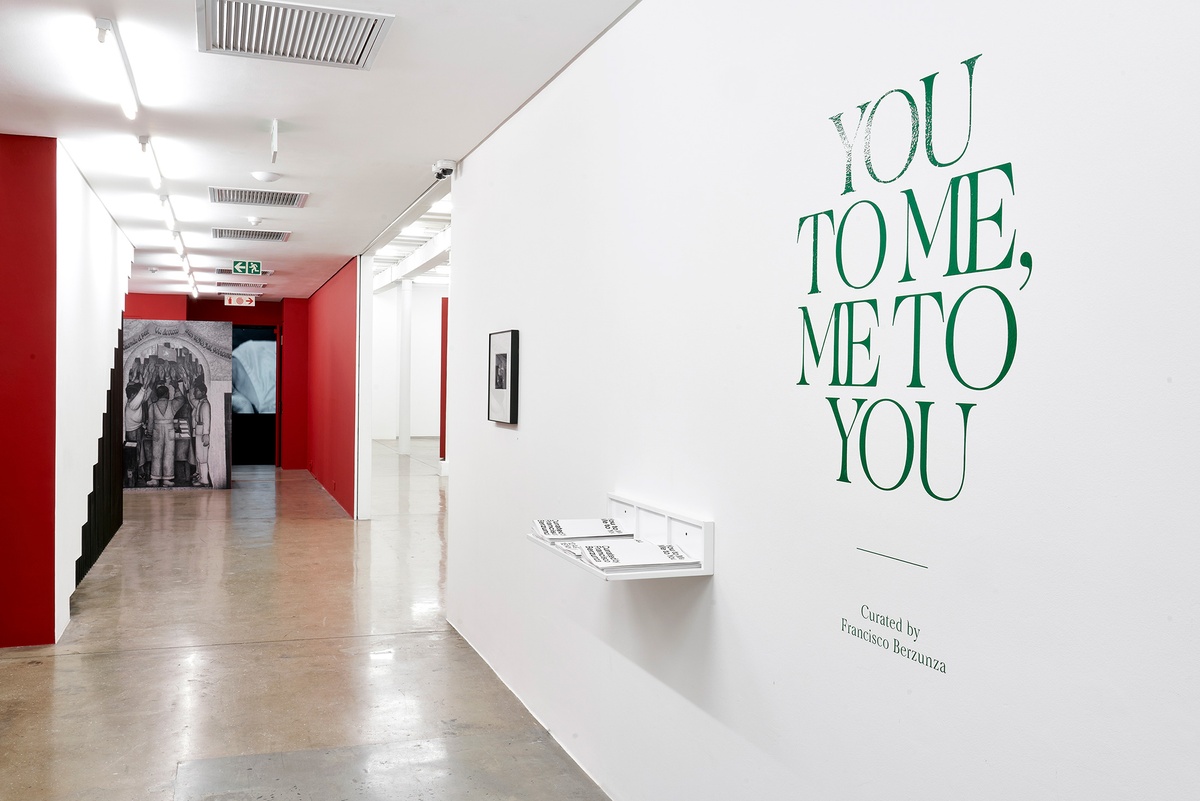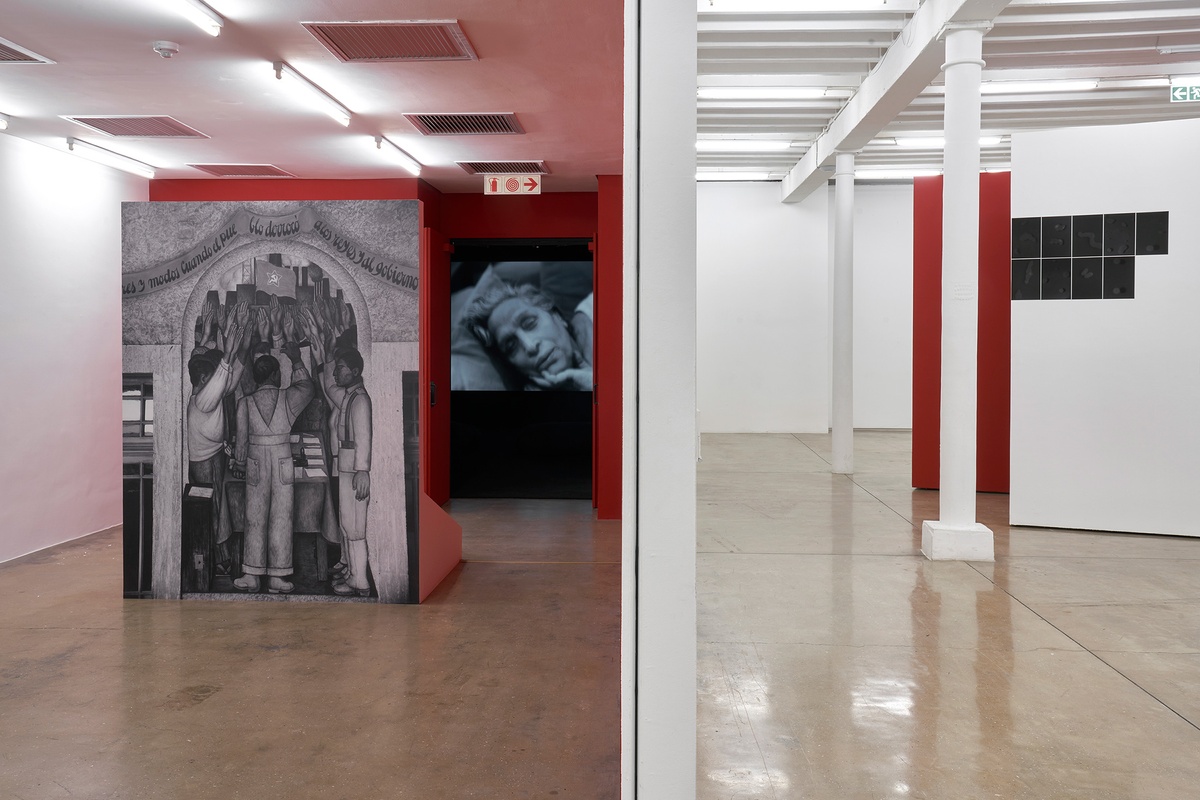Tina Modotti

“Many people could argue that this is not an artwork by Tina Modotti,” Francisco Berzunza says of the scene in question. “This photograph is a record of a photograph. It is not an original, it is a trace.” This trace is the digital printing rights to an archival Tina Modotti photograph, which Berzunza has printed to wallpaper and stationed at the entrance to the exhibition. Pictured is Diego Rivera’s mural, The Protest, part of a fresco cycle painted at the Secretariat of Public Education in Mexico City between 1923 and 1928. With this cycle, Rivera established the Mexican Mural Movement with which Modotti was aligned.
As Berzunza points out, Modotti does not work as a photographer merely recording the works of other artists. Rather, she is working as a photographer by telling us where to look. “At a time when artists were preoccupied with eyes, Modotti pointed, with an almost obsessive manner, to hands – hands as a revolutionary quality, to harvest, make, to point, manipulate. With hands you can hold someone, or something.” For a brief moment, Berzunza owned an original of this photograph: a silver gelatin print signed by Modotti. He acquired it with the intention to give it away to an artist friend in recognition of the part this friend had played in revealing to the curator that he, Berzunza, was in love. He would later confess to this love while standing in front of another Diego Rivera mural, The Assembly. “The concept of a gift is fundamental to this exhibition, the journey of which begins with the intention to give this exhibition away for love,” says Berzunza. “Modotti wanted her work to be distributed widely. The murals, the photographs, these were intended for dissemination.”
Modotti herself appears in Rivera’s cycle. The scene, In the Arsenal, shows her passing out ammunition in anticipation of a great conflict. Her likeness in the mural marked the end of their friendship following Rivera’s expulsion from the Communist Party, and is read as his veiled criticism of her apparent militancy. Modotti had previously featured in his other expansive cycle – The Abundant Earth – at The National Agricultural School, painted some years earlier. There, Modotti appears five times, cast as both virgin and Venus. She and Rivera were lovers at the time.
This image is among hundreds that Modotti made of the murals.
b.1896, Udine; d.1942, Mexico City
“I try to produce not art but honest photographs, without distortions or manipulations,” Tina Modotti wrote, extending the ‘straight’ aesthetic of the West Coast Photographic Movement towards the graphic sensibility and formal objectivity of social realism. A political activist, she was aligned with the Comintern and became a member of the Mexican Communist Party shortly after emigrating to Mexico City with Edward Weston (whom she took as a lover) in 1922. There, Modotti and Weston moved in avant-garde circles and counted among their friends Frida Kahlo, Diego Riviera and Jean Charlot. In 1930, as part of the government’s anti-communist campaign, Modotti was exiled from Mexico. She remained a subversive figure, joining the fascist resistance in Germany and Italy before seeking political refuge in Russia in 1931. This move marked the end of her photographic career. She later returned to Mexico under a pseudonym but did not return to her camera.



